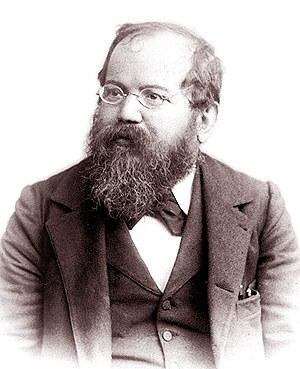4...dxc6 is the main recapture. Black's structure is weakened, but has free diagonals for both bishops. White cannot win a pawn with 5.Nxe5? as 5...Qd4! forks White's knight and pawn, thus regaining the material, leading to positions where White has forfeited any structural advantage, which was the compensation for ceding the two bishops .
5.0-0
After 4...dxc6, the most popular move for White is 5.0-0. This is sometimes called the Barendregt Variation, a name proposed by Robert Byrne in a 1966 article for Chess Life , after the Dutch master Johan Barendregt who played it in the early 1960s. Barendregt made considerable contributions to the theory, although the variation is much older than this. [4] White now threatens 6.Nxe5 because the sequence 6...Qd4 7.Nf3 Qxe4 to regain the pawn, now fails to 8.Re1 pinning and winning the queen. Black has several possible responses: 5...f6, 5...Bg4, 5...Qd6, or 5...Bd6 (all directly defending the e5-pawn, except 5...Bg4 which indirectly defends by pinning the knight). The moves 5...Be6, 5...Be7, and 5...Ne7 are less common moves which have never achieved popularity. The idea behind these moves is that if White plays to win a pawn with 6.Nxe5, 6...Qd4 7.Nf3 Qxe4 is again playable, as the Black minor piece on e6 or e7 blocks the e-file.
After Black defends the e5-pawn, White's main idea is to play d2–d4, opening lines and freeing pieces. Because the pawn-only endgame favours White, White is usually happy if this move leads to mass exchanges on the d-file.
5...f6
A move that was popular amongst masters during Bobby Fischer's reign and is still popular today. White's most active and modern approach to this defense is 6.d4, after which Black has two options: 6...Bg4 and 6...exd4. The move 6...Bg4 can be met also by two options: 7.dxe5 and 7.c3. On 7.dxe5 Qxd1 8.Rxd1 fxe5, White cannot take the e5-pawn with the knight because the knight is pinned by the bishop. Multiple trades have occurred, however, bringing the position closer to an endgame, which is beneficial for White, who has the better pawn structure.
The second move against 5...f6 6.d4 is 6...exd4. White can play 7.Qxd4 (Fischer chose the more obscure 7.Nxd4 in two Exchange Variation games in his 1992 match with Boris Spassky), offering a trade of queens that Black should take to avoid a worse position. After 7...Qxd4 8.Nxd4 c5 9.Nb3 (9.Ne2 is another line; however, Fischer often preferred 9.Nb3) White will develop freely with Be3 and Nc3 or Nbd2 depending on the position, and bringing one of the rooks to d1, usually the rook on f1.
5...Bg4
The most aggressive reply to 5.0-0 is 5...Bg4. After 6.h3, Black has possibilities such as 6...Bh5 or 6...Bxf3, but the most modern and active variation is 6...h5. White cannot take the bishop with 7.hxg4 because Black plays 7...hxg4, attacking the knight. If the knight moves, 8...Qh4 threatens checkmate with 9...Qh2# or 9...Qh1#. After 8...Qh4, if White tries 9.f3, trying to escape via f2 after a queen check, Black replies 9...g3 with inevitable mate.
After 6...h5, the most common continuation is 7.d3 Qf6 8.Nbd2 Ne7 (8...g5 9.Nc4 Bxf3 10.Qxf3 Qxf3 11.gxf3 f6 is fine for black too) 9.Re1 Ng6. Now a typical mistake is: 10.hxg4?!. After 10...hxg4, 11.g3 offering back the piece (White should not try to hold onto the knight, as it would be similar to the position after 7.hxg4?? hxg4). After 11.g3 gxf3?! 12.Qxf3, White is safe and has the superior pawn structure, which is considered to offer a small advantage in the ensuing queenless middlegame. However, after 11.g3 Black can play 11...Bc5!, and after 12.Nb3? comes 12...gxf3 13.Nxc5 Rh3! −+, while after 12.Kg2 0-0-0 13.Qe2 also comes 13...Rh3!.
An interesting alternative to 9.Re1 is 9.Nc4!?. If Black continues as usual with 9...Ng6?, then White can capture the bishop with 10.hxg4 hxg4 11.Bg5! +−. Therefore, Black usually captures on f3 with 9...Bxf3 10.Qxf3 Qxf3 11.gxf3. The resulting queenless middlegame scores slightly better for White. This line was played by Igor Glek three times, scoring 2½ out of 3. [5]
5...Qd6
This is often called the Bronstein Variation. White's popular choices are 6.Na3 and 6.d3. After 6.d4 exd4 7.Nxd4, this move permits 7...Bd7 followed by ...0-0-0. Other ways for White to proceed include 6.a4 or 6.c3. This line is a favorite of Oleg Romanishin, who employed it successfully on multiple occasions. [6]
5...Bd6
The other main reply to 5.0-0 is 5...Bd6. White again goes 6.d4, where Black can play either 6...exd4 or 6...Bg4.
The move 6...exd4 is not the best move. White recaptures the pawn with 7.Qxd4 and stands clearly better. An example of a massacre where Black is on the losing side is as follows: 7...f6 8.Nc3 [note 1] Bg4? 9.e5! attacking the g4-bishop with the queen and the d6-bishop with the pawn. After 9...Bxf3 10.exd6, Black cannot capture the pawn because the f3-bishop is hanging , and after 10...Bh5 11.Re1+ Kf8 12.Qc5, attacking the bishop on h5 while threatening dxc7 discovered check, winning the queen, White has a winning advantage.
The move 6...Bg4 is the better move in this line. White has a couple of possible moves, but the best line is 7.dxe5 Bxf3 8.Qxf3 Bxe5. Numerous trades have occurred, so White is satisfied. After 9.Nd2 Ne7 10.Nc4 Ng6 11.Nxe5 Nxe5 12.Qg3 (Salazar–Smith, Groningen 1976/77), White had the upper hand (Gipslis).





